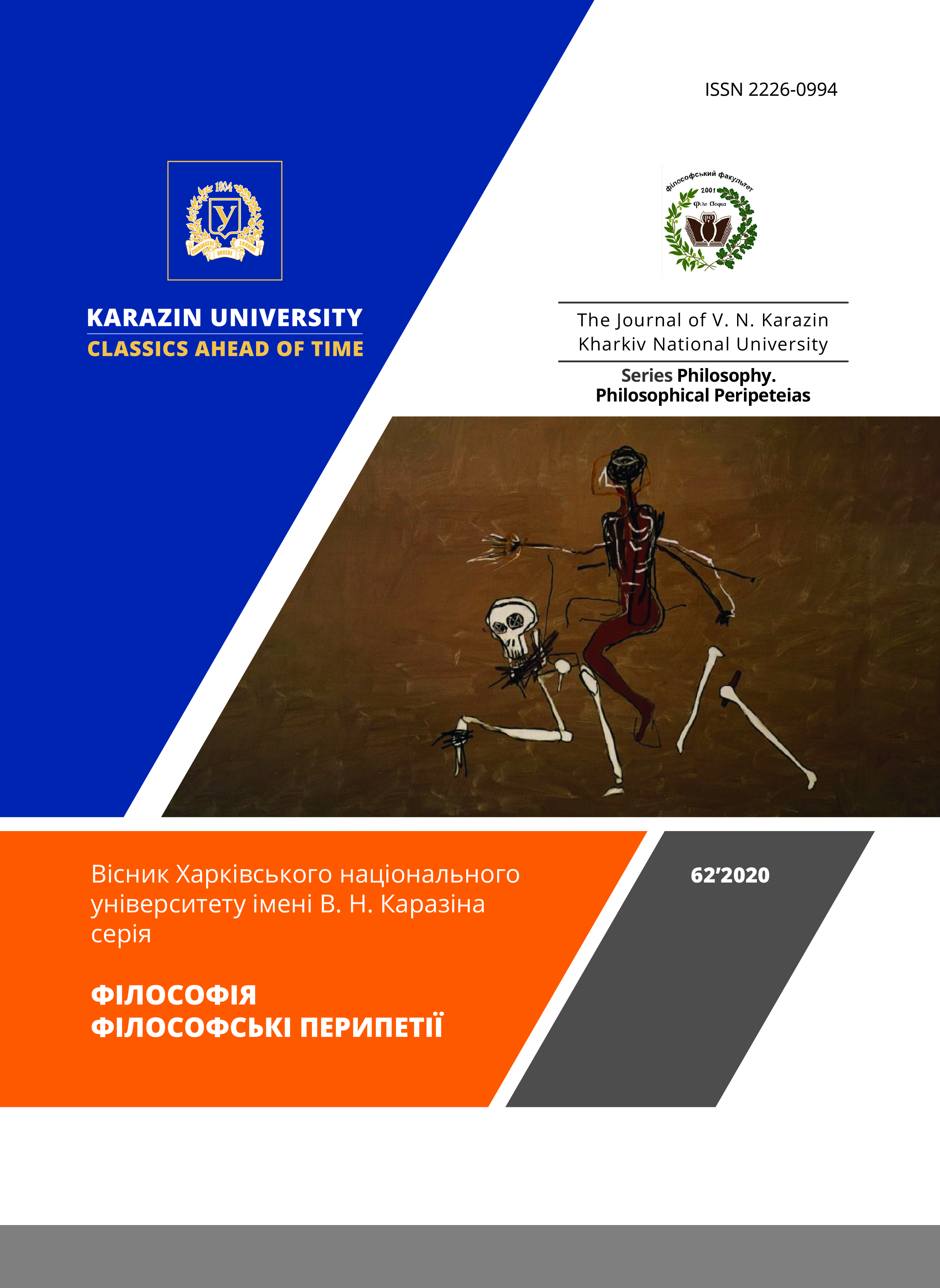P. P. S. OBVERSION: IS A REAL HUMAN BEING WRITTEN?
Abstract
This article considers the state of human beings in a post-postmodern conditions and focuses on obversion as one version of posthuman reality in polyversion, which is lusciousness. Obversion is regarded as a logical and at the same time dynamic figure of dis-identity and non-presence. Trying to find out if a real human being is written leads one to consider the relationship of real and written reality and the possibility of posthuman writing. Posthuman writing becomes apparent in tracks, traces, scars and vestiges such an @ as a signifier of becoming t@iled. The vestiges of a human being are being investigated through the appeal to an actual post-postmodern conceptions such as speculative realism, speculative posthumanism, dark ecology, etc. In the post-postmodern context concepts such as tru(s)t/h, faith and kindness as a counterweight to the excessive postmodern quotation and theorization are being examined. Thus, a human being as a post-postscript is becoming a preface at the same time. This article explores such crucial postmodern issues as iterability, signature and others in a contingent context, in which an immanence of living itself becomes a writing in the postdigitality, post-Internet and post-media extent in relation to the realization of the disaster of technical or even mechanical as human. This research realizes on a showcase of post-postmodern architecture as an immanent spatiotemporal contingency, en-vironment of a human being. It shows how a minimalistic style in post-postmodern ethics and aesthetics correlates with obversive rocking in contrast to binary opposition logic. Thus, it realizes a movement from human to posthuman as scriptor, writing a postscript, and beyond to post-posthuman as postscriptor, writing a post-postscript as a human being, writing itself in its contingent immanence.
Downloads
References
Boyle, C. (2018). Posthumanism as Postscript. In J. Alexander, J. Rhodes (Eds.), The Routledge Handbook of Digital Writing and Rhetoric (pp. 189–198). New York: Routledge. DOI: https://doi.org/10.4324/9781315518497-19.
Boyle, C. (2016). Writing and Rhetoric and/as posthuman practice. College English, 78(6), 532–54.
Broekhuizen, F., Dawes, S., Mikelli, D., Wilde, P., & Hall, G. (2016, February 15). Just Because You Write about Posthumanism Doesn’t Mean You Aren’t a Liberal Humanist: An Interview with Gary Hall. Networking Knowledge: Journal of the MeCCSA Postgraduate Network, 9 (1). DOI: https://doi.org/10.31165/nk.2016.91.422.
De Clercq, R. (2014). Building Plans as Natural Symbols. Architecture Philosophy, 1(1), 59–80.
Hall, G. (2017). The Inhumanist Manifesto: Extended Play. Boulder: The Techne Lab.
Morey, S. (2015). Becoming T@iled. In S. I. Dobrin (Ed.), Writing Posthumanism, Posthuman Writing (pp. 133–154). Anderson, SC: Parlor Press.
Morton, T. (2017). Humankind: Solidarity with Nonhuman People. London, New York: Verso.
Senaldi, M. (2014). Obversione Media e Disintetità. Milan: Postmediabooks.
Turner, T. (1995). City as Landscape: A Post Post-modern View of Design and Planning. London: Taylor & Francis.
Weinstein, J., & Colebrook, C. (2017). Preface: Postscript On the Posthuman: Theorizing Beyond the Posthuman. In J. Weinstein & C. Colebrook (Eds.), Posthumous Life: Theorizing Beyond the Posthuman (pp. IX–XXXII). New York: Columbia University Press. DOI: https://doi.org/10.7312/wein17214.

This work is licensed under a Creative Commons Attribution 4.0 International License.
Authors who publish with this journal agree to the following terms:
- Authors retain copyright and grant the journal right of first publication of this work under the terms of a license Creative Commons Attribution License 4.0 International (CC BY 4.0).
- Authors are able to enter into separate, additional contractual arrangements for the non-exclusive distribution of the journal's published version of the work (e.g., post it to an institutional repository or publish it in a book), with an acknowledgement of its initial publication in this journal.
- Authors are permitted and encouraged to post their work online (e.g., in institutional repositories or on their website) prior to and during the submission process, as it can lead to productive exchanges, as well as earlier and greater citation of published work.






3.gif)




